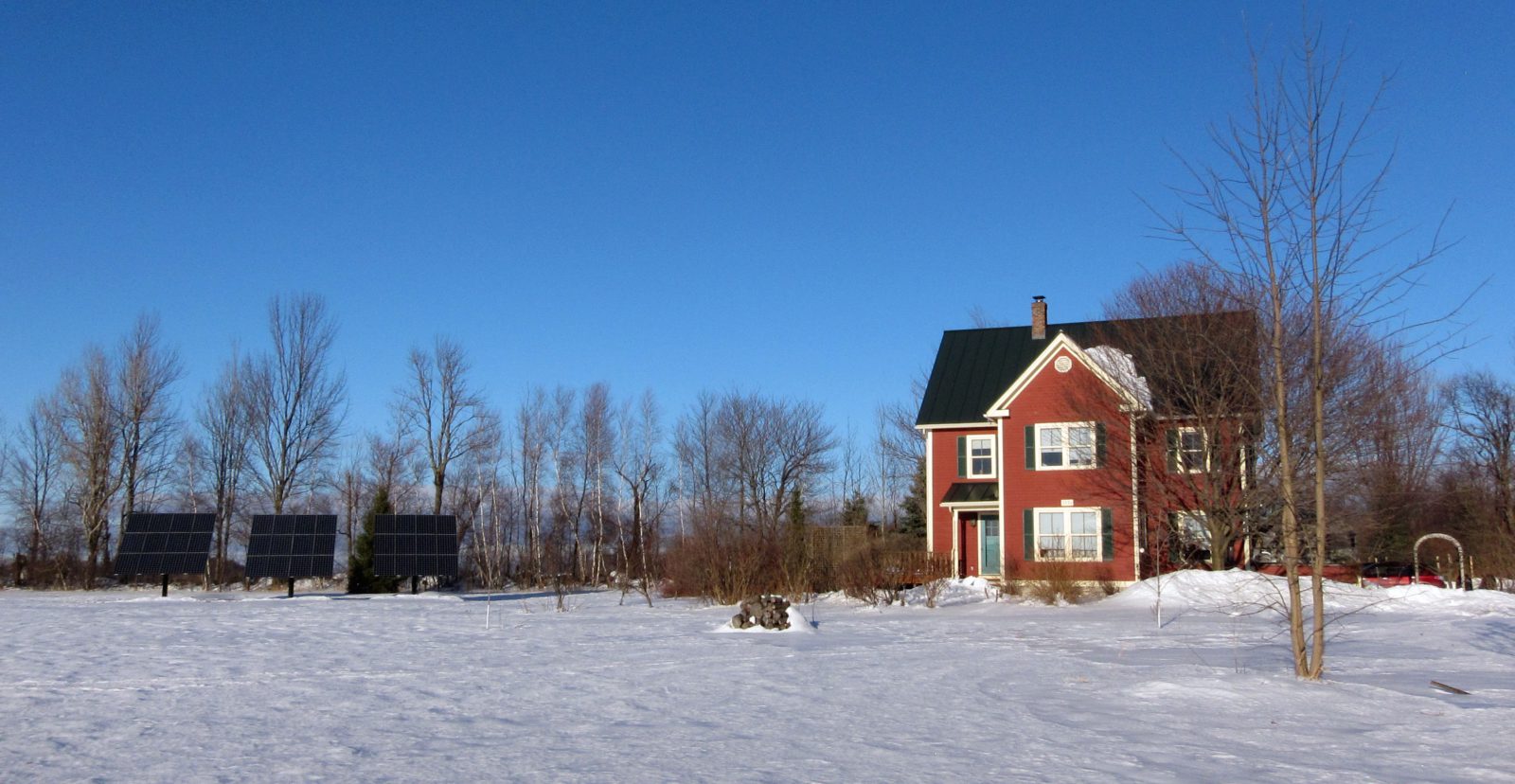“Damage to Vermont’s electric utilities from a two-day snowstorm has exceeded that of Tropical Storm Irene and the infamous 1998 ice storm,” the state’s largest power provider said Friday as thousands of workers tried to restore service.1
An impressive ice storm in December, 2014 left more than 100,000 utility customers without power across Vermont. Green Mountain Power was forced to deploy 900 line workers and tree trimmers from every state in New England, plus New York and Canada, in an effort to restore power to Vermont households.
Clearly, this was a dangerous situation. None of us can live without heat, running water or power for any extended period of time – especially in winter. When the weather wallops our communities and disrupts our vulnerable infrastructure, outages are all too common. As a state, we are heavily dependent on on a few, large power generators and long, heavy transmission lines.
But there is an alternative: a grid peppered with small, renewable energy generators.
Distributed generation brings the source of the energy closer to its point of use, allowing for a lighter, more efficient, and more resilient grid. And the opportunity to create micro-grids. Truly local power. Kind of like avocados.
Wait, what? Bear with us.
An avocado grown and sold in California costs 90 cents.5 That same avocado grown in California, shipped cross-country to New England is now $1.21. The product is the same – the avocado hasn’t changed – but what has changed is the delivery of that avocado: the transmission. Bummer for Vermont guacamole lovers. Wouldn’t it be great if avocados were grown throughout Vermont, easily picked in your community and enjoyed without all that cross-country shipping? Well, our Vermont climate isn’t going to support avocado trees (at least not now, but we can certainly apply that concept to our current energy infrastructure).
Distributed generation and micro-grids are part of a strategy to withstand future storms, which are expected to become more intense as a result of climate change. Interest in micro-grids has soared in recent years as extreme weather events like Superstorm Sandy have battered the United States. Micro-grids have become even more attractive as the price of solar, combined heat and power plants, and other decentralized energy sources has dropped. 3
So, how does a micro-grid work in Vermont? Today’s grid connects homes, businesses and other buildings to central power sources. This interconnectedness means that when part of the grid needs to be repaired or is damaged unexpectedly, power goes off for everyone. A micro-grid defines a much smaller area that can break off in times of crisis, like storms or power outages, and operate on its own using local energy generation. Imagine if Montpelier, Barre, and Berlin could disconnect from the rest of the grid, and use the power from the Wrightsville dam or solar arrays to provide power to everyone in those towns. No one would be left in the cold.
There are a few critical pieces to this puzzle: the renewable energy generators and the utilities that manage the flow of electricity.
Realizing the benefit of distributed energy generation and micro-grid technology, Green Mountain Power created the Stafford Hill Solar Farm in Rutland. The pilot project combines solar, storage and micro-grid technology in an innovative, new approach to improving resiliency and safety in communities. According to the U.S. Department of Energy, the Stafford Hill Solar Farm is the first project to establish a micro-grid powered solely by solar and battery back-up, with no other fuel source.
“Vermont is at the forefront of an energy revolution. Our work to deliver clean energy is comprehensive and coordinated, as you can see from the many stakeholders and leaders involved. The future for Vermont is a bright one, in part because we are working together to build a clean energy future with innovative products and services, a more resilient grid, and lower costs.” -Green Mountain Power President and CEO Mary Powell. 2
With 7,700 solar panels, the Stafford Hill Solar Farm can generate enough power for 2,000 homes during full sun, or 365 homes year-round. The substantial battery storage (4MW, if you’re counting) can power a micro-grid that includes the emergency shelter at Rutland High School. 2
SunCommon is proud to help Vermonters add solar to their homes or use their energy dollars to support a Community Solar Array, because it’s the right ethical and financial decision for the homeowner. And, we’re proud to be part of building the essential clean, distributed power generation that will mean a lighter, less expensive, and more resilient electrical grid in the long run. Working with our utilities to build this next generation smart grid could mean the next Irene or the next ice storm might not be so costly to our communities.
Sources:
2 http://www.greenmountainpower.com/innovative/solar_capital/stafford-hill-solar-farm/
4 http://energy.gov/sites/prod/files/oeprod/DocumentsandMedia/1817_Report_-final.pdf
5 http://www.hassavocadoboard.com/retail/volume-and-price-data





